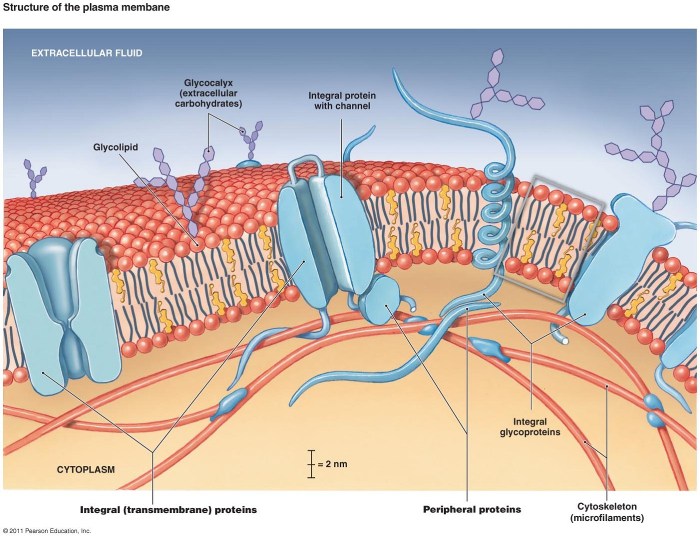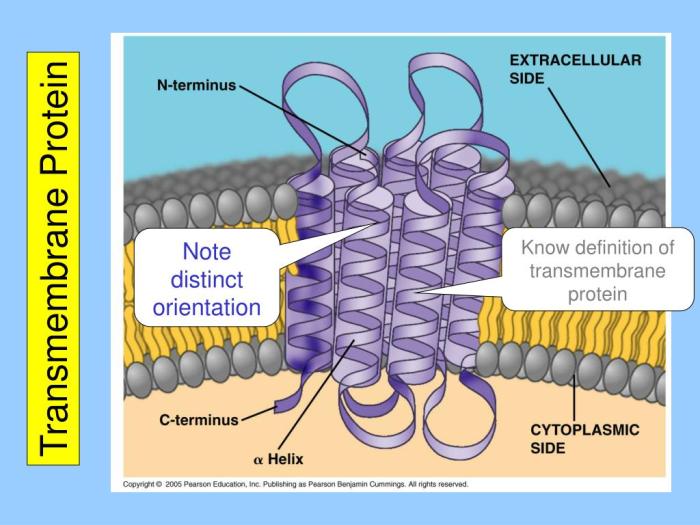Label the image of transmembrane proteins – Labeling transmembrane proteins is a crucial technique in cell biology and drug discovery. It allows researchers to visualize, track, and analyze these proteins, providing valuable insights into their structure, function, and interactions.
This comprehensive guide delves into the methods, applications, and image analysis techniques used in labeling transmembrane proteins. We explore the advantages and limitations of various labeling methods, discuss their applications in cell biology and disease diagnosis, and provide a detailed overview of image analysis tools for quantifying and interpreting labeled protein images.
Methods for Labeling Transmembrane Proteins

Various techniques are employed to label transmembrane proteins, each with its advantages and limitations:
Biotinylation
- Covalently attaches biotin to lysine residues on the extracellular surface of the protein.
- Advantages: Simple and efficient, allows for specific labeling of cell surface proteins.
- Limitations: May interfere with protein function, not suitable for intracellular labeling.
Fluorescent Labeling
- Involves conjugating fluorescent dyes to the protein.
- Advantages: Allows for real-time visualization and tracking of proteins.
- Limitations: Can alter protein function, may require genetic modification or chemical conjugation.
Immunolabeling, Label the image of transmembrane proteins
- Uses antibodies specific to the transmembrane protein.
- Advantages: Highly specific, allows for multiplexing and simultaneous detection of multiple proteins.
- Limitations: Requires generation of specific antibodies, may not be suitable for all proteins.
Proximity Labeling
- Employs enzymes that generate reactive molecules that covalently label nearby proteins.
- Advantages: Allows for unbiased labeling of proteins in close proximity to the target protein.
- Limitations: May label non-specific proteins, requires genetic manipulation to express the enzyme.
The choice of labeling method depends on the specific research question, the properties of the protein, and the desired level of specificity and sensitivity.
| Method | Efficiency | Specificity |
|---|---|---|
| Biotinylation | High | Moderate |
| Fluorescent Labeling | Variable | High |
| Immunolabeling | Moderate | High |
| Proximity Labeling | Moderate | Moderate |
FAQ: Label The Image Of Transmembrane Proteins
What are transmembrane proteins?
Transmembrane proteins are proteins that span the lipid bilayer of cell membranes, creating a channel or pore that allows molecules to pass through.
Why is it important to label transmembrane proteins?
Labeling transmembrane proteins allows researchers to visualize, track, and analyze these proteins, providing valuable insights into their structure, function, and interactions.
What are the different methods for labeling transmembrane proteins?
There are various methods for labeling transmembrane proteins, including genetic labeling, chemical labeling, and antibody labeling. Each method has its own advantages and limitations.



